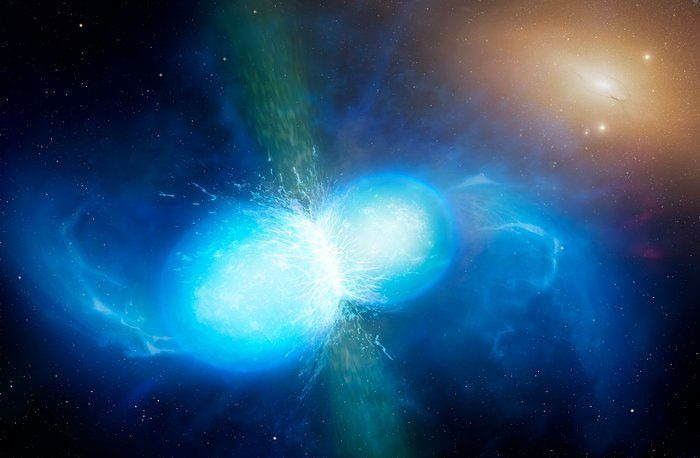Unusual Neutron Star Binary Discovery Offers A Peek Into The Universe's Mysteries
KEY POINTS
- One star in this neutron star binary system is significantly bigger than the other
- Before the find, neutron stars in binary systems were thought to have very similar masses
- The new discovery could help resolve the question of how fast the Universe is expanding
Scientists have discovered an unusual binary system that will collide in about half a billion years. According to the scientists, the discovery could help shed light into some of the mysteries of the Universe.
An international team of scientists reported their discovery of a pulsar (PSR J1913+1102) that is locked in a binary system with another neutron star.
Neutron stars are extremely dense celestial objects that are actually the dead remnants of a star after a supernova explosion. They are so dense that a single sugar cube of neutron star material would weigh a billion tons on Earth.
Pulsars, on the other hand, are rapidly rotating neutron stars that tend to emit radio waves at rates of up to one thousand pulses per second.
What's interesting about this binary system is that the two neutron stars are significantly different in size, with one being larger than the other.
The researchers wrote in the study that "this is the most asymmetric merging system reported so far."
After the GW170817 event in 2017 in which scientists observed the first detected collision of neutron stars, most theories had suggested that neutron stars in binary systems have very similar mass.
"Our new discovery changes these assumptions. We have uncovered a binary system containing two neutron stars with very different masses," lead researcher Robert Ferdman of the University of East Anglia said, according to a news release. "These stars will collide and merge in around 470 million years, which seems like a long time, but it is only a small fraction of the age of the Universe."

The existence of this asymmetrical double neutron star binary system opens up the possibility that many other such binaries exist. What's more, the collision between the uneven pair could shed light on some of the mysteries in the Universe.
Such neutron star collisions release immense amounts of energy. However, because of the asymmetric nature of the PSR J1913+1102 binary system, it is likely that its collision will be different from GW170817. As one of the neutron stars is significantly larger than the other, it would likely cause a distortion in the shape of the smaller neutron star and strip large amounts of matter before they merge, potentially leading to an even more powerful emission than that of an equal-mass collision.
Observing this unique collision would allow scientists to study both the mystery of what really makes up these extremely dense celestial bodies and, add valuable information about the expansion of the Universe.
"Excitingly, this may also allow for a completely independent measurement of the Hubble constant – the rate at which the Universe is expanding," Ferdman said. "The two main methods for doing this are currently at odds with each other, so this is a crucial way to break the deadlock and understand in more detail how the Universe evolved."
The study is published in the journal Nature.
© Copyright IBTimes 2024. All rights reserved.












